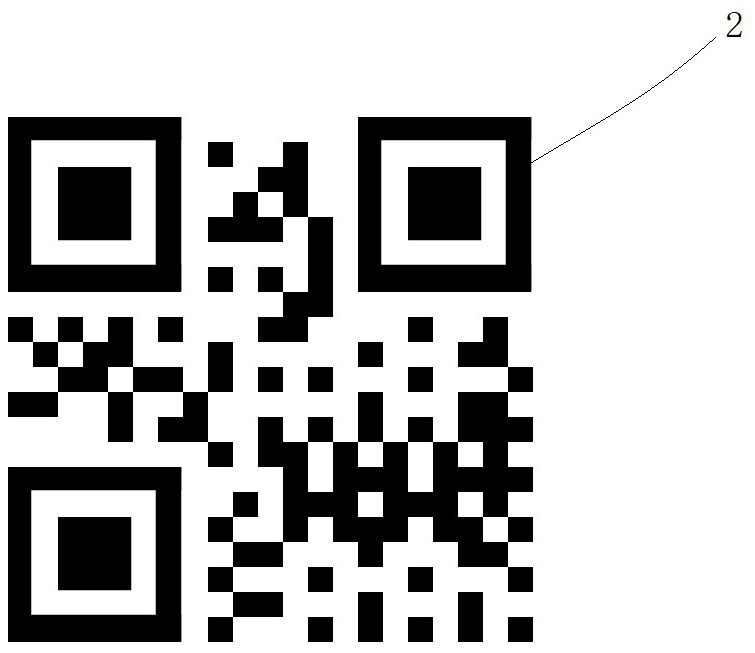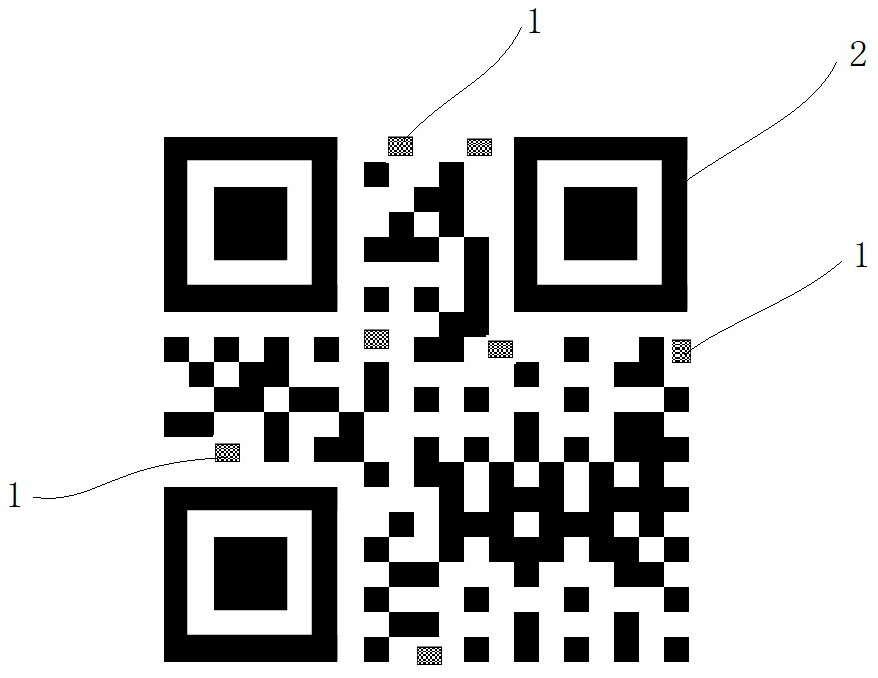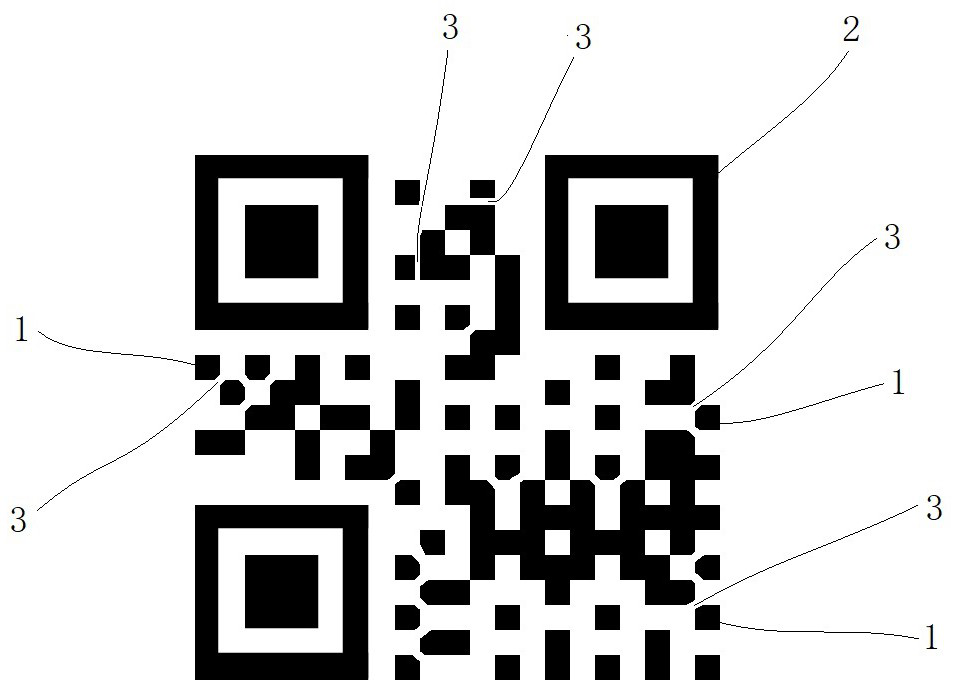High-precision sawtooth anti-counterfeiting method
A sawtooth, high-precision technology, applied in the field of high-precision sawtooth anti-counterfeiting, can solve problems such as difficulties in printing production, and achieve the effects of easy identification, high accuracy, and fast consumer experience
- Summary
- Abstract
- Description
- Claims
- Application Information
AI Technical Summary
Problems solved by technology
Method used
Image
Examples
Embodiment 1
[0057] figure 1 It is the original plan view of the current QR code.
[0058] like figure 2 shown in figure 1 In the blank space of the original version of the current QR code, insert ( figure 1 There are only 16 isolated ink dots 1 in the current original version of the two-dimensional code, which is not enough to meet the requirements, so some isolated ink dots 1 with a width (or diameter) of 0.6-0.8 mm need to be inserted from the outside of the body. The number of isolated ink dots 1 inherent in the original version of the two-dimensional code plus the number of inserted isolated ink dots 1, the cumulative total n is preferably greater than 12, or 24, or 36, or 48, or 60, or 72 , or 80, or 92, or 100, or 200, or 300.
[0059] The code 2 printed on each printed matter 6 is preferably a unique two-dimensional code.
[0060] After the natural micro-diffusion of the ink (shrinkage should be understood as negative diffusion) to form sawtooth and cause the deformation of t...
Embodiment 2
[0066] figure 1 It is the original plan view of the current QR code.
[0067] like image 3 shown in figure 1 In the original version of the current two-dimensional code, the narrowest connection 3 of the three blank ink sticks is disconnected to separate some isolated ink dots 1, and the width of the isolated ink dots 1 is set to 0.8mm. In other words, some isolated ink dots 1 are separated from the disconnected wires of adjacent ink sticks. The number of isolated ink dots 1 inherent in the original version of the two-dimensional code plus the number of separated isolated ink dots 1, the cumulative total n is preferably 36-72.
[0068] The code 2 printed on each printed matter 6 is preferably a unique two-dimensional code.
[0069] After the natural micro-diffusion of the ink (shrinkage should be understood as negative diffusion) to form sawtooth and cause the deformation of the isolated ink dot 1, it is dried, cured, and shaped, and the two-dimensional code is enlarged a...
Embodiment 3
[0073] like Figure 4 As shown, combining the above two examples, in figure 1 Some isolated ink dots 1 are additionally inserted and printed in the blank gaps of the original version of the current QR code (in order to facilitate the readers to see and distinguish, the ink dots are represented by hanging nets in the figure, and there should be no hanging nets and no difference in actual implementation), and from The narrowest junctions 3 of the blank ink sticks on three sides are disconnected to separate some isolated ink dots 1 .
[0074] Other steps can be implemented in combination with the above two examples.
PUM
 Login to View More
Login to View More Abstract
Description
Claims
Application Information
 Login to View More
Login to View More - R&D Engineer
- R&D Manager
- IP Professional
- Industry Leading Data Capabilities
- Powerful AI technology
- Patent DNA Extraction
Browse by: Latest US Patents, China's latest patents, Technical Efficacy Thesaurus, Application Domain, Technology Topic, Popular Technical Reports.
© 2024 PatSnap. All rights reserved.Legal|Privacy policy|Modern Slavery Act Transparency Statement|Sitemap|About US| Contact US: help@patsnap.com










